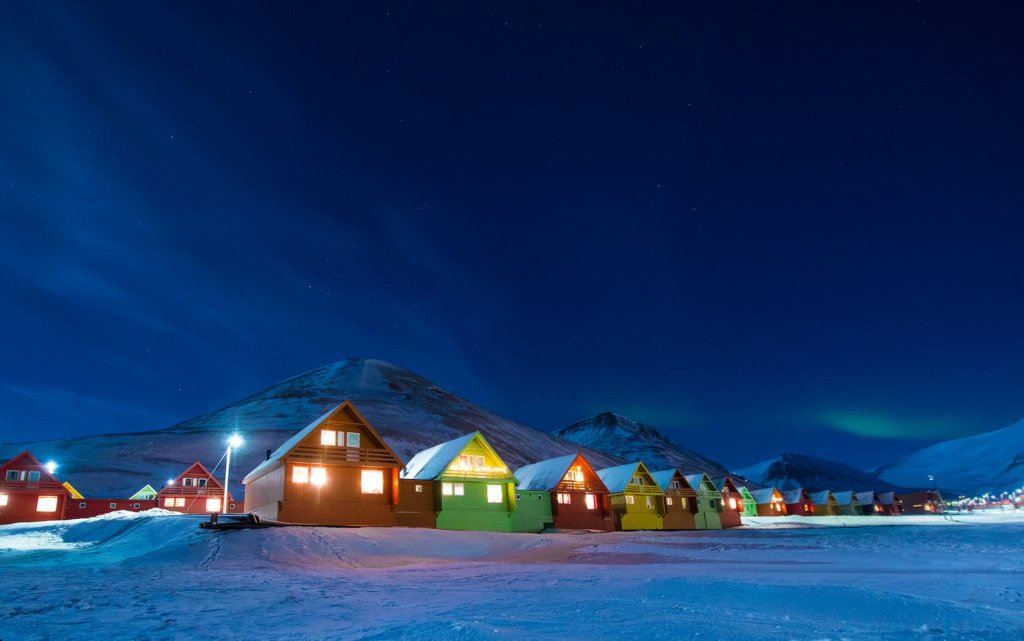Holy Night
The Longest Night of the Year
Way up north in Alaska, at the onset of winter, the sun sets below the horizon and doesn’t rise again for two months. This phenomenon known as “polar night” happens every year above the arctic circle. The effects of the darkness surely go well beyond the inconvenience of shoveling the driveway under artificial light. Psychologists have long seen the effects of seasonal depression that comes with the setting sun, particularly in northern communities. And for those living in darkness, a lack of light can bring about a lack of hope. The long winters of Alaska produce isolation, depression, and even despair. One Anaktuvuk Pass resident writes, “In the darkness, there is no vision, no direction, and no purpose.”
We’re all aquainted with darkness too. Hallmark, the nostalgic Christmas songs on the radio, and even the church lead us to believe our waiting should be full of excitement and unending joy. But for many people, that expectation doesn’t acknowledge the reality of tragedy and suffering in their lives. We need an advent–a Savior–for the lives we actually have: ones filled with light and hope but also darkness and despair. The truth is, waiting isn’t always joyful and triumphant. Waiting can be painful. To have to wait for things like diagnoses, healing, reconciliation after an argument, or reunion with our loved ones in heaven is evidence the world isn’t yet how God intends for it to be.
December 21st—the longest night of the year—we acknowledge and express our love to people everywhere who aren’t experiencing Christmas as a joyful occasion this year. For some in our congregation, this will be their first Christmas without a parent or a spouse or even a child at the dinner table. Some have experienced violence and unspeakable tragedy. Many people are lonely or afraid. To all of you, we say, “We see you.” And El Roi—the “God Who Sees”—sees you.
Even as we wait for Christ’s arrival as a baby here on earth, we long for his return when “He will wipe away every tear from our eyes. When there will be no more death or mourning or crying or pain, because the former things will have passed away” (Revelation 21:4).
*Consider reaching out to someone you know who might be a little blue this Christmas. Maybe your visit can shine a bit of Christ’s light into their darkness.
Let There Be Night
For centuries, darkness has played the antagonist in the advent story and in our society. In the scriptures, darkness represents the formless void that existed before God ordered the world in Goodness. Darkness represents death and suffering and sin and hopelessness. In our society, darkness is often a symbol of despair and sadness. More physically, darkness is cause for fear and uncertainty. We night-light our bedrooms to scare away the monsters that only come out at night; we run up the basement stairs as quickly as possible; our streets are aglow with the light of overhead lamps and headlights. We more often see darkness as a foe to fight off than a gift to receive gratefully. Even so, perhaps sometimes darkness gets a bad “wrap.”
In his book Let There Be Night: Testimony On Behalf of the Dark, Paul Bogard and company attempt to remind readers of the holiness and wonder found in the dark. One contributer, Henry Beston, writes,
The stars have fled from our cities and towns. Where once thousands were visible, now stargazers will be lucky to see one hundred. “With the creep of light polution,” explains astronomer Arthur Upgren, “has come a far wider, perhaps more profound, loss to the human spirit.” Could it be that in erecting artificial lights to wage war against our fear of the darkness, we are putting out the heavenly lights?
So many of the advent scenes we hold in heart and mind we imagine set in darkness: the angel appearing to Mary; the shepherds keeping watch over their flocks by night; Mary and Joseph walking the streets of Bethlehem to find a place to stay; Jesus’ arrival into the world; the Magi traveling by starlight to pay homage to the newborn King. Each Christmastide we are reminded of the holiness of night in Franz Gruber’s famous carol Silent Night. We all know the Magi brought fancy gifts to lay before the newborn King: gold, frankincense, and myrrh. But what gifts might the darkness give?
THREE GIFTS DARKNESS BESTOWS
Gift 1: Mystery
Mystery opens the human spirit to what is beyond our understanding, including God. Paradoxically, spending time in darkness strengthens night vision. Perhaps our time in darkness might grow our (comfort)ability to see in and move through our own future encounters with darkness or accompany others through theirs.
Gift 2: Wonder
A fact of our spinning earth is any given location in the world spends half the time in darkness. And if we let it, that darkness can feed our sense of wonder. In darkness, we’re given the chance to encounter the briliance of things we cannot see but might hear, smell, or feel: dew on the grass, owls singing, the wind whistling through the fields.
Gift 3: Intimacy With Creation
When light falls away and darkness comes on; when wolves howl at the moon and forests breathe; when stars blink and the Milky Way spills across the sky; when the wind stills as the moon rises; when we truly feel part of the night, then we might might be drawn into awareness of and gratitude for the extended family of all living things.
In our lives and in the life of Jesus, darkness has a meaningful role to play. Whatever else that first Christmas night was–silent/not silent; crowded/lonely; uncomfortable/dirty; imperfect–it was holy. We don’t sing of the holiness of night much outside of Franz Gruber’s famous Christmas carol “Silent Night.” But it WAS holy. And it was made so by Christ’s humble and powerful arrival.
Walking in darkness (metaphorically or literally) can be terrifying and lonely. AND, darkness can awaken us to the wonders and mysteries of God. Take a moment to look at the artistic imagining of Mary and the newborn Christ a couple pages back. Mary and Jesus appear as a silhouette against the backdrop of Israel’s long history of watching and waiting for a Savior to deliver them from darkness. The image heralds the truth Christ was born into that history and into darkness. He was born into the shaddowed corners of the world. And he came to bring eternal light and life to all who fear and tremble in the dark.
Lux Aeterna (Light Eternal)
The winters in Alaska are harsh. But what about the summers? At the height of summer in Alaska, the sunlight blankets the landscape a full 24 hours in one day. No darkness. All light. So much joy to soak in. When Christ returns, he will make all things new. And the Book of Revelation tells us that in the new creation, there will be no need for the sun (Revelation 22:5), because the glory of God will shine brighter than a thousand suns! We will walk in the light and experience the pure joy of Christ’s kingdom forever.
The prophet Isaiah proclaimed “the people walking in darkness have seen a great light. On those living in the land of deep darkness a light has dawned.” What is this light? Who could bring hope amid utter darkness? Isaiah declares, “For to us a child is born!” And how was he born? What would he be like? What would he do?
Into the darkness he came.
Christ–Light of the World–was born into darkness so that whenever we walk in darkness, we might be accompanied by a Great Light.
Paul refers to those who love Jesus as children of the light—children of the sunlit world (Ephesians 5:8). Gazing at the newborn face of Christ, we start to see him more and more in our lives and in our world. We see Jesus showing up in thousands of ways and in all sorts of places—often in the dark corners where no one else will go.
Jesus isn’t just lighting up the night, he’s transforming it! Just like he transformed death by passing through it, he’s transforming darkness by being born into it. So that whenever you walk through the valley of the shadow, you will not need to fear. Because Jesus will be right there with you... Emmanuel!
So rise up, oh you sleeper, awake... The Light of the dawn is upon you! (Ephesians 5:14)




